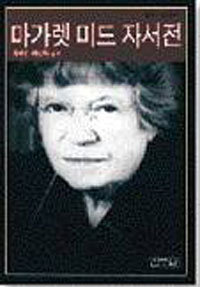Margaret Mead

Many refer to Franz Boas as the father of the American anthropology. Then, it would also be right to say that Margaret Mead, 1901-1978, is the mother of anthropology. Mead spent her whole life studying human nature and cultural diversity. She had to live in undeveloped countries for most of her life for her studies.
One can see how serious and focused Mead was about her life, career, family and anthropology while reading the biography she wrote in the last phase of her life. For more than fifty years, Mead visited places where even males found it very hard to live. Mead pursued her studies in Samoa, Sepik, Manus Island and Bali. She studied and practiced experiments on the cultural differences between men and women, childcare, culture, and human nature. Her studies presented new questions to the world, which had been dominated by Freuds theory at that time.
Meads life shows that she was very generous about sex and marriage. Mead predicted monogamy would not last for a long time since the life expectancy of humans expanded. Also, she advised that people should not have high expectations about marriage and was in favor of spare marriage. Mead was married three times; first to Luther Cressman (a theological student during his marriage to Mead; later an anthropologist himself), and then to two fellow anthropologists, Reo Fortune and Gregory Bateson. She managed to stay on good terms with her three ex-husbands and their spouses. It can be said that she lived a very challenging life.
Though Mead did not mention it in her biography, her studies always led her to be an active participant in everything she was related to. She did not stop her social activities until the twilight of her life. She was president of major scientific associations, including the American Anthropological Association and the American Association for the Advancement of Science. She also held various positions in many other scientific organizations. She lectured about various topics such as religion, women, crime, drinking, and marital problems. She also had a column in Redbook magazine for 16 years, eventually contributing to the protection of womens rights. Most of all, Mead was the one who actually introduced anthropology to the public. Her contributions enabled Americans to understand other cultures and get move away from ideas of cultural superiority.
When Margaret Mead died of cancer in November 1978, the people of Manus Island showed their sympathy by holding a funeral for five days, which was only practiced when a chief died on the island. Since Mead`s death, Derek Freeman, an Australian anthropologist, has published ruthless attacks on Mead`s work on Samoa, in which he said that the study was unbelievably naïve. The New York Times published this story on the first page of their magazine and the legend of Mead was threatened. However, many anthropologists who visited Samoa again recognized that Mead was right and accurate about her studies. Meads biology definitely shows why Mead is such a respected scholar around the world.
The biography itself is very literary and delicate while also providing insights into life, study, human beings and society. It is quite obvious that Mead was ready to accept the places she was staying at as her hometowns, and was passionate about leading her life.




![‘무사고 장롱면허’ 1종 안준다…내년 달라지는 도로교통법 [알쓸톡]](https://dimg.donga.com/c/138/175/90/1/wps/NEWS/IMAGE/2025/12/30/133064716.2.jpg)


